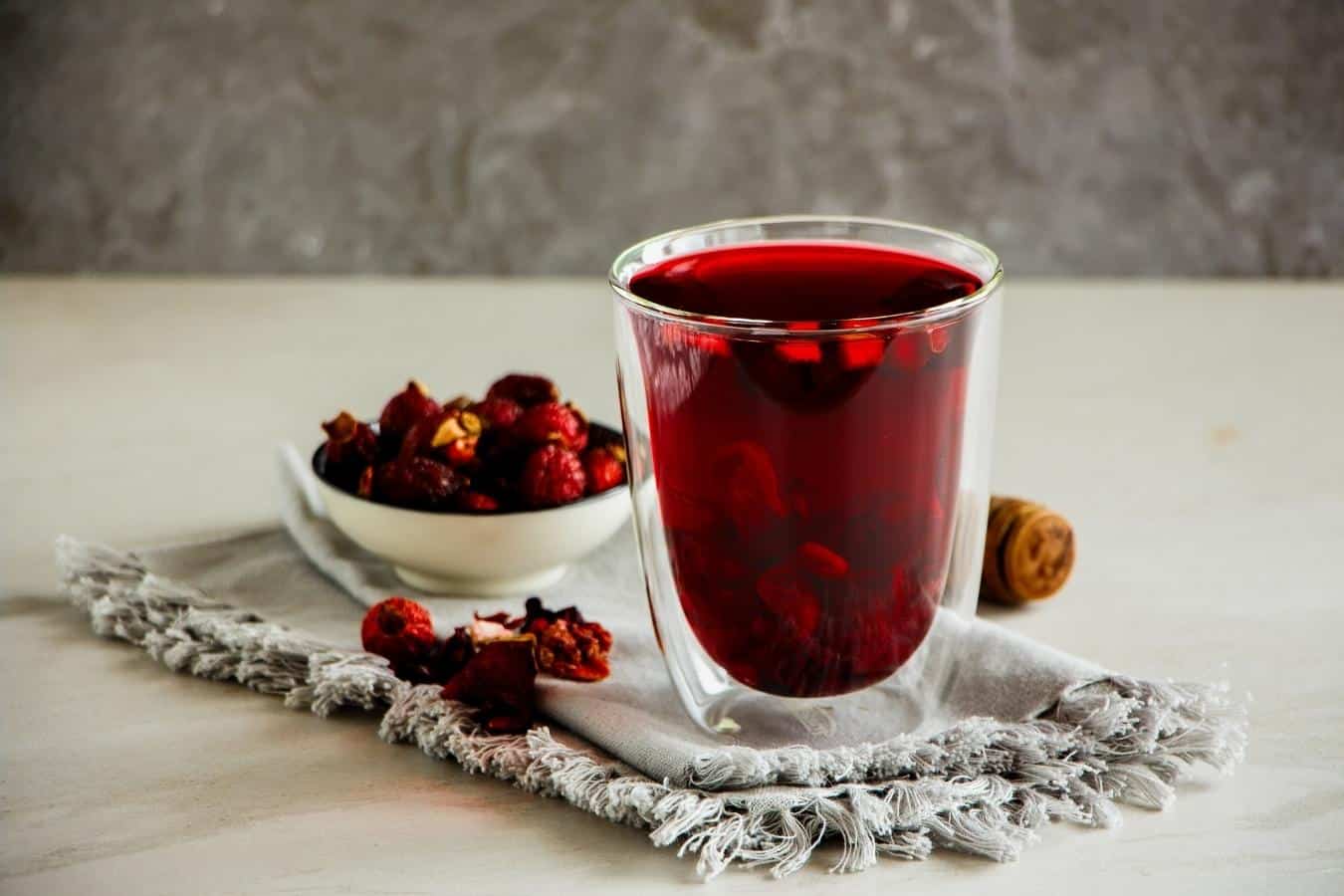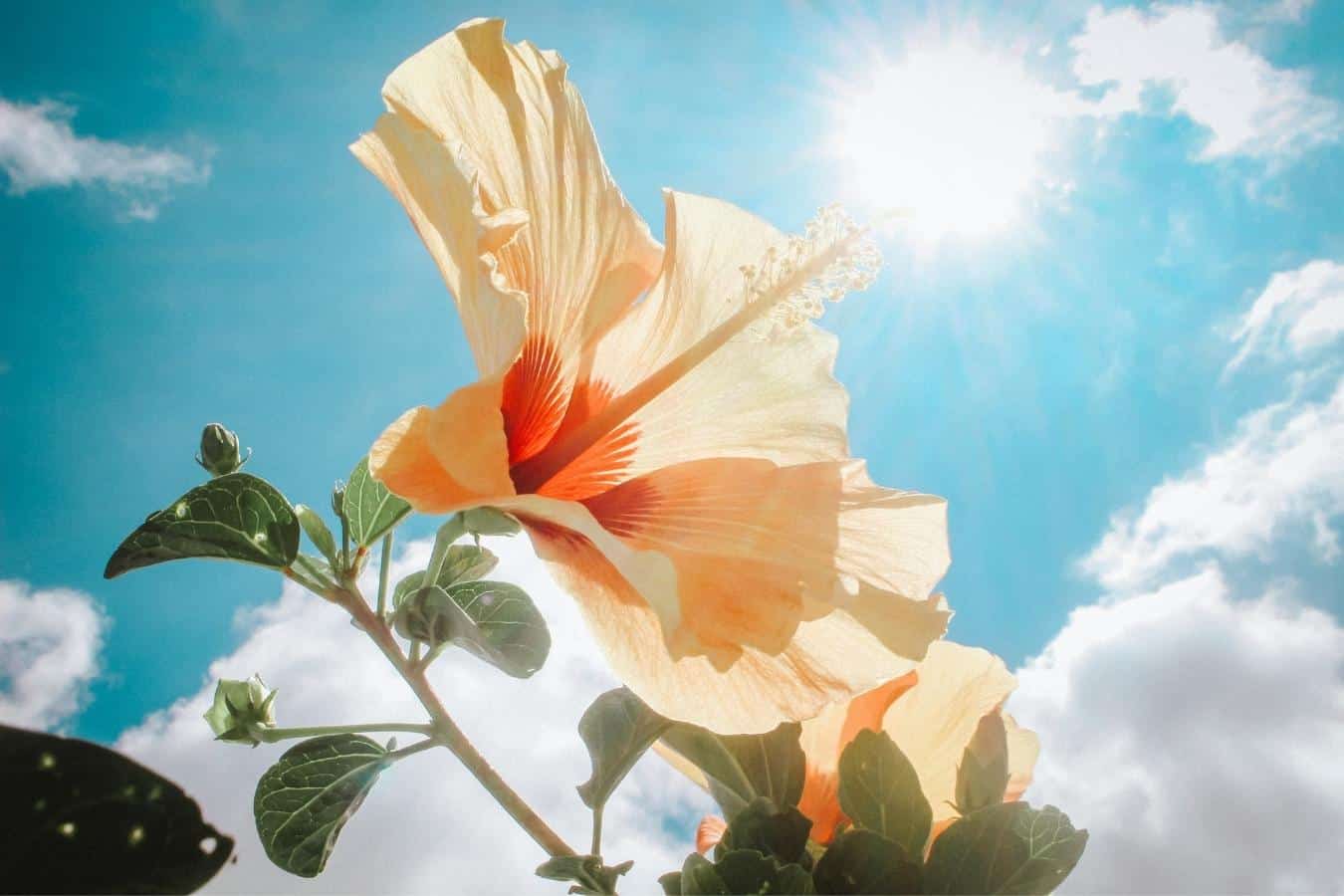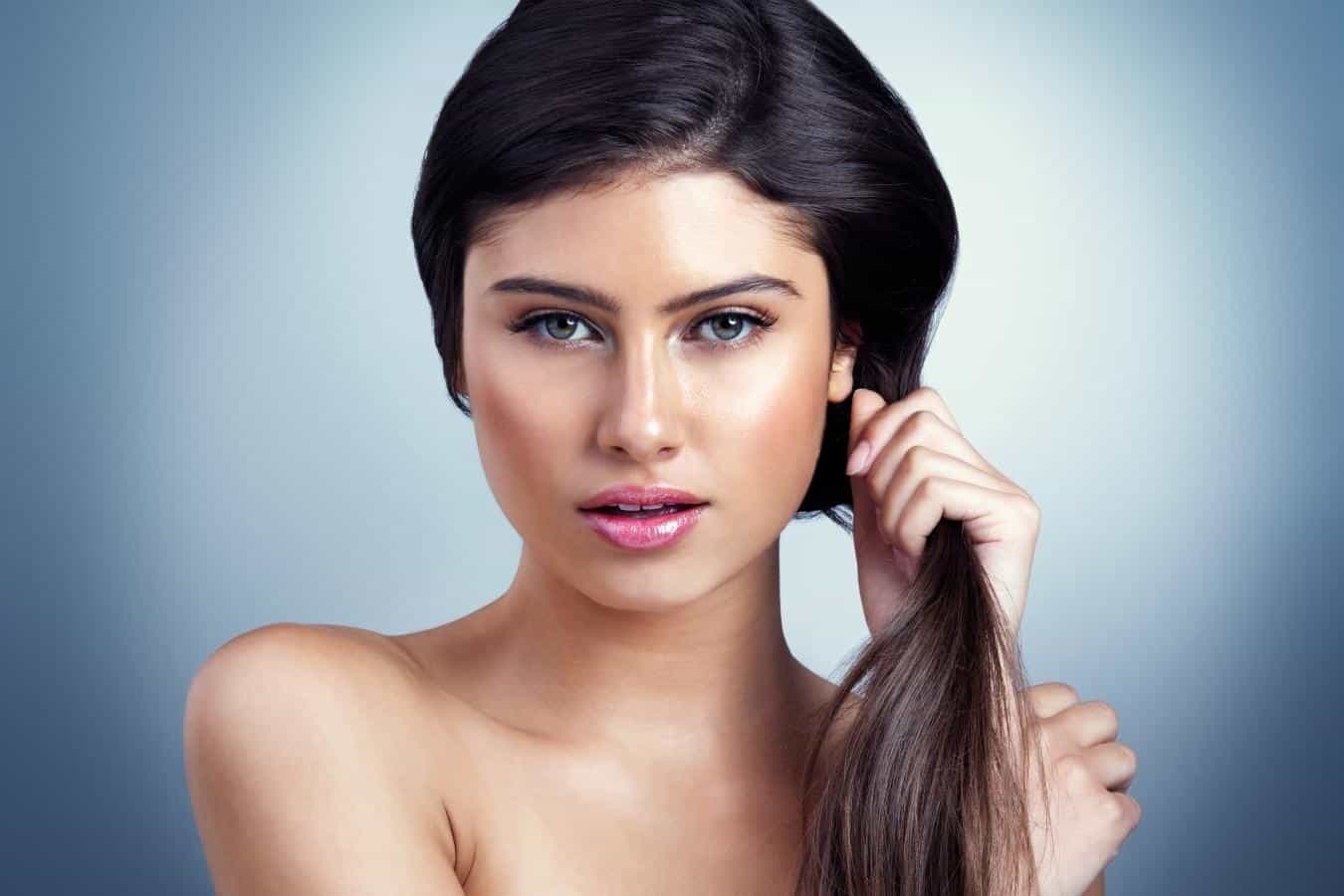Hibiscus flowers have a lovely scent and can be found in many bright shades. Not only are these flowers stunning to look at, but they can help your hair in a number of ways. What are the benefits of hibiscus for hair, and how can you use this flower in your haircare routine?

Hibiscus flowers have been linked to many hair benefits. Using hibiscus on your hair could potentially add volume, condition your hair, and give your locks a healthy shine. In addition, hibiscus can strengthen hair roots, which could help to prevent future hair loss.
What Is Hibiscus?
Hibiscus is a type of flowering plant that includes hundreds of different species.
While the plant is often included in gardens because of its beauty, it’s also known for its medicinal properties. This is an edible plant that can be used in a variety of ways.
The flowers on hibiscus plants can be found in many bright colors, including pink, red, yellow, and lavender.
Although the plant blooms continuously, the flowers usually don’t last for more than a few days. When the flowers have finished blooming, they close up and fall off the plant.
7 Hibiscus Benefits For Hair

Hibiscus is a nutrient-rich plant that can provide your hair with nourishment, benefiting it in a number of ways.
Whether you take hibiscus orally or apply it directly to your hair, it can treat common problems and can help keep your hair healthy.
Some potential benefits of hibiscus for hair include:
1. Hibiscus is Moisturizing
Hibiscus plants contain an ingredient called mucilage that’s used to store water.
This ingredient can also provide hair with hydration.
Not only can this ingredient help lubricate hair strands, but it can also serve as a leave-in conditioner, helping hair to retain moisture.
In order to get hydration from hibiscus, it should be applied directly to the hair. This will lubricate your hair with mucilage and give it an infusion of moisture.
2. Can Treat and Prevent Dandruff
Thanks to the moisturizing properties of hibiscus, it can soothe an irritated scalp, serving as a dandruff treatment.
Hibiscus flowers also contain high quantities of citrus acid, which means it can help balance the pH levels of your scalp.
When you regularly use hibiscus on your hair, it will be easier for your scalp to regulate sebum production, reducing the risk of dandruff.
3. Hibiscus Can Boost Volume and Promote Hair Growth
While research is limited, studies suggest that hibiscus could stimulate the scalp and promote hair growth. (1)
In addition to encouraging growth, it can add volume to your hair, which can give the appearance of thicker, fuller hair.
As mentioned previously, hibiscus can help to regulate sebaceous glands. This can keep your hair from producing excessive amounts of oil that weigh down your hair and make it look flat.
Hibiscus can help you keep your hair clean and healthy.
4. Adds Shine
Since the mucilage in hibiscus lubricates hair strands, it can give hair a shiny, lustrous appearance.
It can improve the overall health of hair. When your hair is healthy, it reflects more light, giving your hair a natural sparkle and shine.
On top of that, hibiscus may be able to prevent premature graying.
It contains antioxidants and vitamins, which the hair needs in order to produce melanin. It can be a way to keep your hair color vibrant and prevent it from fading. (2)
5. Hibiscus Could Prevent Hair Thinning and Loss
Nutritional deficiencies can cause shedding, thinning, and hair loss.
Since hibiscus is packed with important nutrients, it can help to provide hair with everything that it needs to thrive.
It’s a particularly potent source of antioxidants, such as vitamin C and beta-carotene.
Hibiscus can reduce the risk of hair loss if it’s taken orally or applied directly to the hair.
If you’ve noticed that your hair is shedding more than usual, or if your hair is starting to thin, there’s a good chance that your hair isn’t getting all the nutrients it needs.
6. It Can Protect Your Scalp
Since hibiscus is able to keep the pH levels of the scalp balanced, it can help to protect the scalp against damage.
It has anti-inflammatory properties, allowing it to treat scalp irritation. Because it’s also very moisturizing, it can keep the scalp from getting overly dry.
The best way to enjoy these benefits is to massage hibiscus oil or paste directly into the scalp.
Massaging your scalp can also help to stimulate the blood vessels beneath the skin, which could potentially encourage hair growth.
7. It Can Help Prevent Split Ends
Hibiscus can be an emollient, which means it can help lock moisture into your hair strands. This process can also improve the elasticity of your hair. When your hair is less dry and brittle, split ends are less likely to form.
Split ends need to be cut off in order to keep the hair healthy. If split ends aren’t removed, your hair could continue to split. If you’re growing your hair out, ingredients like hibiscus can help you prevent split ends so that you’ll be able to keep more length during hair cuts.
5 Ways To Use Hibiscus For Hair

Flowers and Leaves
The flowers and leaves of hibiscus plants are edible and can even be eaten directly from the plant!
The plant can be used in a variety of dishes, and the flowers and leaves can also be ground down into a powder or used to make tea.
If you plan on eating the hibiscus plants in your own yard, make sure you avoid using any chemical pesticides.
Hibiscus Oil
Hibiscus oil can be massaged directly into the scalp, directly providing your hair with nutrients.
Usually, the hibiscus is combined with some kind of carrier oil, like coconut or olive oil. Massaging the oil into your scalp can stimulate hair follicles, providing additional benefits.
Drink Hibiscus Tea
Drinking tea is an excellent way to provide your body with the antioxidants and nutrients found in the hibiscus plants.
While you can buy hibiscus tea at stores, you can also make tea at home by steeping hibiscus petals in hot water for a few minutes.
It produces a tart tea that can be enjoyed hot or cold.
Hibiscus Powder
You can purchase pre-made hibiscus powder or make powder yourself by grinding down the flowers and leaves of the hibiscus plant.
That powder can be mixed into foods and consumed orally or added to hair products. You can add hibiscus powder to shampoo and conditioner or use it as an ingredient in a homemade hair mask.
Hibiscus Supplements
Supplements made with hibiscus typically consist of a capsule that’s filled with hibiscus powder.
While this can be a convenient way to provide your body with the nutrients that are found in hibiscus, taking a supplement may be less effective than using the plant in other ways.
For best results, supplements should be taken with food.
3 Hibiscus DIY recipes

Hibiscus and Yogurt Mask
Ingredients:
- Hibiscus powder or fresh hibiscus flowers
- Plain yogurt
- Honey
- Add 1 tablespoon of hibiscus powder to a bowl or wash 8 hibiscus flowers and grind them down into a paste.
- Mix the hibiscus with 4 tablespoons of plain, unsweetened yogurt. If the mixture is too thick, you can drizzle in water for a better consistency.
- Mix in 1 tablespoon of honey.
- Apply the mixture evenly to your hair before covering your hair with a shower cap. Leave the mixture on for at least 45 minutes.
- Rinse out the mask with a mild shampoo. Use conditioner and then allow your hair to dry.
Hibiscus Hair Paste
Ingredients:
- Hibiscus flowers
- Hibiscus leaves
- Rosemary oil
- Wash the hibiscus flowers. Pull off the petals of the flowers and place them in a bowl with the hibiscus leaves.
- Grind down the flowers and leaves until they have a paste-like consistency.
- Mix in a few drops of rosemary oil
- Massage the paste into your hair, starting with the roots. Cover your hair with a shower cap.
- Leave the paste on your hair for at least 45 minutes before rinsing out with a mild shampoo. Use the paste at least once a week for best results.
Hibiscus Hair Oil
Ingredients:
- Carrier oil, such as coconut, argan, or olive oil
- Hibiscus flowers
- Hibiscus leaves
- Wash 6 to 8 hibiscus flowers and grind them down into a paste along with 6 to 8 hibiscus leaves. Alternatively, you can use 1 tablespoon of hibiscus powder.
- Place one cup of carrier oil in a pot and heat over medium-low heat.
- When the oil is warm, mix in the hibiscus paste. While stirring, continue to heat the mixture for approximately five minutes.
- Remove the oil from heat and allow it to cool. Apply the oil to your hair while it is still warm, starting at the roots. Test the oil before applying to make sure it’s not too hot.
- Once the oil has been massaged into your hair, leave it in place for at least 30 minutes. Rinse off the oil with lukewarm water. If necessary, you can use a mild shampoo to remove all the oil from your hair.
Frequently Asked Questions
Some animal studies suggest that hibiscus can stimulate hair follicles, promoting hair growth. It has a long history of being used as a hair growth treatment in countries like India.
Hibiscus flowers can be used to create natural dyes, which could temporarily change the color of your hair. Using hibiscus won’t change the color of dark hair, but it could enhance red tones or add a slight tint to lighter colored hair.
Hibiscus oil could potentially irritate a sensitive scalp. To avoid irritation, it’s best to apply hibiscus to a small section of your skin before massaging it into your entire scalp. No serious side effects have been linked to the use of hibiscus on hair.
Sources
Disclaimer: This site is not intended to provide professional or medical advice. All of the content on LovedByCurls.com is for informational purposes only. All advice should be followed at your own discretion. Ingredients may change at any time so always check the product label before using. Check our full disclaimer policy here.
